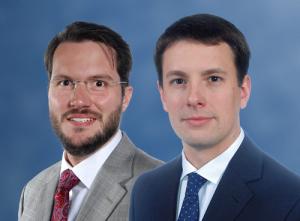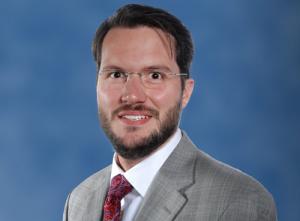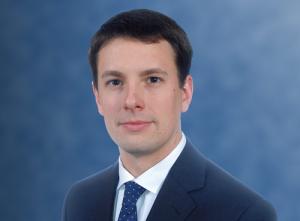Profiles in Innovation
Kirk Ellison and Jeffery Preece were nominated for Fortnightly Top Innovators 2019 by EPRI.
What makes someone a top innovator? Where did they come from in their organization? What caused them to dream up their innovation? And how do they plan to further build on this development? We posed these questions to some of this year's top innovators.

PUF: Give us a layman’s idea of what this is that you have and are developing further.
Kirk Ellison: As an industry we see a need for new water management technologies. We see a whole category of technologies that are meant to eliminate having a wastewater discharge. These technologies include reverse osmosis and thermal evaporator systems. But to go along with all of those technologies, in addition to the treated clean stream of water that can be discharged or reused, there’s also a concentrated liquid waste stream that needs to be disposed of.
This is an issue the industry been dealing with. One aspect gaining traction is what we call wastewater encapsulation. The primary driver at coal plants is that they find a way to dispose of concentrated liquid wastes, so they don’t pose any future challenges and are permanently sequestered in a disposal unit, like a landfill.
That’s been the primary area we’ve been working, looking at a lot of issues from fundamental chemistry, where we’re looking at mixing these liquids with ashes and then specialized additives so that we achieve chemical stabilization and physical solidification of the material.
 Kirk Ellison: Encapsulation is a springboard for more research and continuing to dive deeper on other application spaces.
Kirk Ellison: Encapsulation is a springboard for more research and continuing to dive deeper on other application spaces.
Concurrently, we’re also working at the other end of the spectrum, by performing field demonstrations on the overall process and landfill management aspects of the material.
PUF: How do you go about this?
Kirk Ellison: We have internal lab capabilities where we do a lot of concrete like testing. We do a lot of mix design work, but we also have what I call our research partners or remote and even virtual labs.
We use these labs to send materials off for specialized testing looking at detailed mineralogy, and environmental properties. We also do virtual lab work where we do a lot of geochemical modeling.
 Jeffery Preece: The ideal end result would be that once this material is encapsulated and in position in a landfill, then the residual impact is diminished significantly if not to zero.
Jeffery Preece: The ideal end result would be that once this material is encapsulated and in position in a landfill, then the residual impact is diminished significantly if not to zero.
PUF: Are these mostly EPRI projects where you’ve got four or five utilities working with you? How did that come about?
Jeffery Preece: Five utilities have been supportive and engaged since the initiation of the effort at EPRI. As Kirk mentioned, the genesis of this work stems from the need for alternative water management strategies. That’s because a lot of technologies, while they produce clean water for various applications or discharge, do not address the long-term fate of constituents.
When we presented this idea to the EPRI membership, we were able to leverage their experiences with the water treatment technologies and an understanding of what they believe would be some of the long-term goals for applying this type of technology.
They’ve been very engaged in the research and have been active participants. They provide us with samples of ash and water that we can use to help them understand the technology. We use the information to build databases and frameworks for managing different types of wastewaters and additives that might be site-specific and then help them understand how the technology could be deployed in the future.
We have a number of ways that we conduct the research. It might be in our lab in Charlotte at a field pilot demonstration at the Water Research Center, which is co-located at Georgia Power’s Plant Bowen. We also worked at a member’s site where Kirk and the team performed the first large-scale field demonstration of encapsulation.
PUF: Give me a sense of why this is good for the environment and the companies.
Jeffery Preece: One of the biggest challenges we see is the long-term impact that a lot of these constituents could have. What we’re trying to do is close the loop on the cycling and retreatment of some of these constituents.
When we think about where these constituents move around from air pollution to water and now to a landfill, we’re trying to get these materials into a state where they no longer require active management.
The ideal end result would be that once this material is encapsulated and in position in a landfill, then the residual impact is diminished significantly if not to zero. We’re trying to reduce the impacts of wastewater and pollutants over the next hundred years.
PUF: How did this come about?
Jeffery Preece: Kirk gave you information about where the technology ideas generated over the last couple of years. When I first started at EPRI, I was responsible for evaluating water treatment challenges and planning our future research portfolio.
One of the areas that our membership expressed concern about in 2014 was addressing solid waste management. It was unclear whether some of the liquid and solid wastes could be managed with existing practices.
When we evaluated it, we realized, we know water treatment. But we don’t know a lot about our solid waste components, and we’ve not seen this as an industry.
When Kirk came on board we got this effort going and brought his experience and expertise into the research. Then we started to think, okay, if we’re trying to encapsulate this material, we know we have to understand what the material is; but we also have to know the strategies around doing the encapsulation, and what that means for a power plant moving into the future. While there are some examples, both historically and in other industries, nothing was exactly the same.
Kirk Ellison: As the power industry started looking at discharge elimination technologies, very little was being discussed or considered around managing the residual wastes, other than saying this material has to go to disposal.
That was an initial driver. But the idea didn’t just come from nowhere. There was a lot of work done in the initial phases of surveying what else was out there outside of the power industry.
We didn’t see anything that was an exact fit technology ready to go off the shelf. But we started to see and piece together the puzzle with different ideas coming from multiple industries. Jeffery and I started looking at ways we could collaborate with those other industries and pull these ideas together.
We saw things being done like nuclear salt waste management and then also in the mining industry with cemented mine backfill and tailings disposal. There were a bunch of areas we were able to start pulling expertise from and build a consortium of folks to start working in this research area.
PUF: With the participating five companies, where does this go?
Kirk Ellison: As the technology is coming to the forefront and becoming mature, the potential applications basis is continuing to grow as utilities start to look at hosts of different wastewaters they may need to manage.
They are starting to ask whether encapsulation may be a fit for a whole host of different wastewater that are very site specific? We see the application space growing.
Encapsulation is a part of that picture for some sites, but it’s a broader conversation. We see it being a springboard for more research and continuing to dive deeper on other application spaces.
Essentially the focus now is how can we assist with direct application of the technology? What does it look like to put this in full scale considering site specific conditions? There’s a lot going on.
Beyond our lab R&D and piloting, we’re look at equipment, systems integration, automation.
We are also trying to continue with our collaborative research model. Just as we brought aspects of the technology together from external applications, we are now asking ourselves can we take the technology and look at some examples where the mining industry or oil and gas or others could essentially leverage the chemistry and the fundamentals of encapsulation we have learned to solve some of their challenges as well?
Fortnightly Top Innovators 2019 articles:
- Fortnightly Top Innovators 2019
- Fortnightly Foremost Innovators 2019
- Profiles in Innovation
- PSEG's Emmanuel Ansah, Will Barnes, Lauren Biernacki, Julie Duncan, Lisa Garcia, Sal Orsino, and Jared Osorio
- PPL Electric Utilities' Patrick Barnett, Mychal Kistler, and Ihab Salet
- Southern Company's Clifton Black
- ABB's Luiz Cheim
- EPRI's Kirk Ellison and Jeffery Preece
- EPRI's Charles Vinsonhaler
- Arizona Public Service's Kim Wagie



